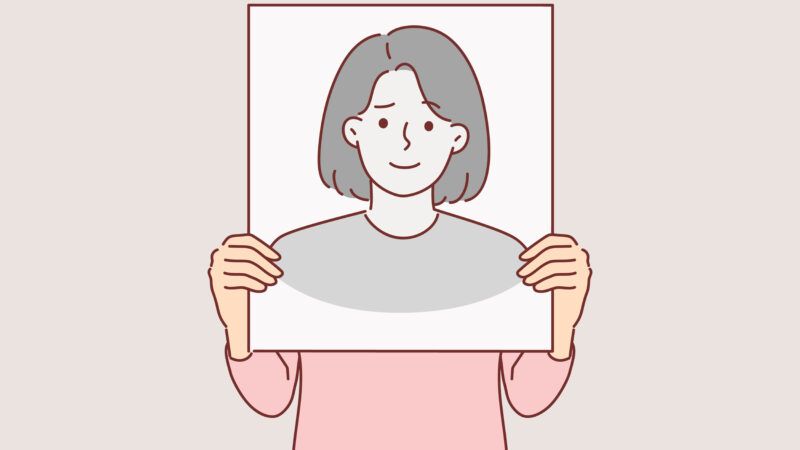AI Versus Age-Verification Laws
AI tools churning out images of fake IDs could help people get around online age-check laws.

A new AI-powered web tool seems tailor-made to help teens get around age-verification laws online—and showcases the futility of trying to set a minimum age for social media use.
In the old days, getting around a minimum-age requirement meant actually having a physical ID card to say that you were of legal age. But with online age verification, all one may need is an image of that ID card.
Enter OnlyFake, a website using AI technology to cheaply generate images of fake IDs.
You are reading Sex & Tech, from Elizabeth Nolan Brown. Get more of Elizabeth's sex, tech, bodily autonomy, law, and online culture coverage.
"OnlyFake is claiming to use 'neural networks' to generate realistic looking photos of fake IDs for just $15," reported 404 Media earlier this week:
In our own tests, OnlyFake created a highly convincing California driver's license, complete with whatever arbitrary name, biographical information, address, expiration date, and signature we wanted. The photo even gives the appearance that the ID card is laying on a fluffy carpet, as if someone has placed it on the floor and snapped a picture, which many sites require for verification purposes.
The OnlyFake website disappeared (for now) after the 404 Media report. But it surely won't be the last service to offer digital fake IDs.
Carding People to Use the Web
Measures to require people to prove their age before using social media or viewing porn platforms have been sweeping U.S. statehouses of late. A few have already passed, and a seemingly endless stream are in the works. The idea has also been gaining steam among federal lawmakers, too.
These measures tend not to say just how tech companies must verify user ages. But the easiest way—and thus the one most likely to get put into practice—is to require users to upload a picture of their driver's license (or another government-issued ID) either directly to the tech platform or through some third-party verification site.
Proponents of online age verification laws say they're needed to stop teenagers and children from using social media or seeing adult content. But even if you agree with this goal in theory, its implementation comes with some serious issues.
For one thing, rules requiring people to attach their real IDs to their social media accounts and other online activities would be a serious invasion of privacy for adults and minors alike. It could open us all up to hackers, pranksters, identity thieves, and government harassment. Gone would be the days when anyone could be truly or even nominally anonymous online.
Some say these tradeoffs are worth it to stop kids from having free range in the digital sphere. But would age-check laws even succeed in their stated goals?
The existence of sites like OnlyFake suggests that they would not. Using it, any teen with $15 could potentially thwart a social media or porn platform ID check.
Outsmarting the Age-Check Regime
Of course, people can currently produce fake ID images with photo-editing tools like Adobe Photoshop. But AI promises to make the task simpler and quicker and, perhaps, produce better results. What was once a painstaking process that required some technical skill could soon be easily done by anyone employing the right AI tool.
Tech companies doing age checks could employ measures designed to discourage fakes, such as requiring people to submit a photo of themselves holding their ID. But AI-powered services could in turn generate fake photos of someone holding their fake ID card. And as AI tools inevitably get better, these will only get more realistic looking.
There are perhaps some metadata verification techniques that could be used here. But metadata can also be messed with, to some degree.
Some age-check measures—such as one passed in Utah last year—would require parental approval for minors to create social media accounts. But kids have been getting around parental approval requirements forever in the non-digital world. It's hard to imagine that this online approval couldn't also be faked with the right tools.
The big AI image-generation platforms may put in place systems to bar them from being used to generate fake images. (For instance, Instagram's AI service—which generates new images from user-uploaded images using user-inputted keywords—said it could not generate an image when my prompt was "fake ID.") But more underground services, like OnlyFake, can always step in to fill this void.
More and More Elaborate Verification?
Tech companies (or the third-party verification services they rely on) could avoid the fake ID issue by employing services that essentially run background checks on all users.
But the more elaborate the ID checks required, the more cost these companies incur and the more time it takes. And most tech companies will want to do the bare minimum required to comply with any relevant laws, not go above and beyond in order to exclude more users from their platforms.
Perhaps if fake IDs are perceived as a big enough problem—and the penalties for failing to find them severe enough—we will indeed see elaborate identity-checking endeavors start taking off.
Will the keep-kids-off-social-media crowd be happy then? Will the teens be better off?
I doubt it. Even if teens aren't able to get around age verification laws—and even if we accept that social media might be bad for them (something far from obvious)—we're looking at some serious potential for unintended consequences.
Because teenagers will find alternatives, and these may actually be more risky or more likely to encourage the behaviors people worry about. It's absurd to think that young people will simply say, "Well, can't create a TikTok account, so I guess I'll just go cruise the mall like it's the 1980s."
They'll just utilize platforms that don't technically fall under the purview of social media, like chat services, or private web forums—heck, even Google Docs would work. Or they'll visit websites and sign up for apps based in countries without age checks. And all of this will make monitoring what's going on—and countering any dangerous trends or things like bullying—more difficult, while also making it less likely that the places where teens are viewing or creating content will be responsive to U.S. authorities at all.
The bottom line is that young people have been thwarting minimum age laws to buy beer, see R-rated movies, and all sorts of other things for a long time. In some ways, technology has made this more difficult, with things like state-specific holograms and laser embossing making driver's licenses less easy to fake than they once were. Yet tech has also provided all sorts of new tools for forging realistic IDs—particularly if these IDs aren't intended to be examined in physical form.
A lot of hype about the power of AI might be overstated but its potential to create realistic-looking images is undeniable. Score one for the 16-year-old who just wants to post memes online.
Today's Image



Show Comments (12)